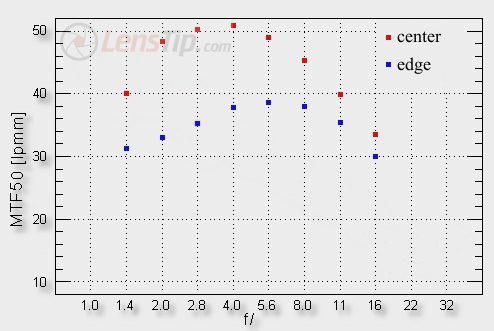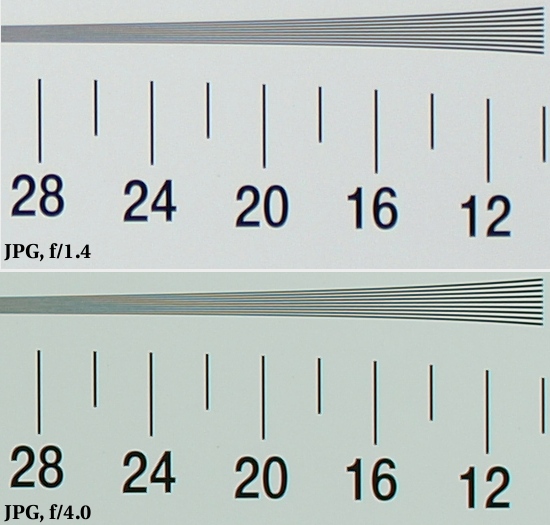Leica D Summilux 25 mm f/1.4
4. Image resolution

Before we get down to the facts, we should add that the Leica performance will be compared to two other lenses: a Canon 1.4/35, which on a 20D camera gives the same visual field, and an Olympus 3.5/35, which, for the Four Thirds system reflex camera owners, is a cheaper equivalent of a standard prime.
Please Support UsIf you enjoy our reviews and articles, and you want us to continue our work please, support our website by donating through PayPal. The funds are going to be used for paying our editorial team, renting servers, and equipping our testing studio; only that way we will be able to continue providing you interesting content for free. |
- - - - - - - - - - - - - - - - - - - - - - - - - - - - - - - - - - - - - - - - - - - - - - - -
In the case of the Canon 1.4/35, the fully useful maximum relative aperture, at which the lens had the MTF results similar to f/16, was a very strong argument for buying it. The Leica fares even better, reaching the level of 40 lpmm at f/1.4, so exactly as at f/11. This is truly an impressing achievement because it translates into record results at the middle of the aperture range. At f/2.0 we get to the level of 48 lpmm so almost 10% better than with the brilliant Olympus 2.0/50. The maximum MTF50 values, reached by the Leica at f/4.0, are minimally better than 2.0/50 showed and by 6% better than the maximum of the Olympus 3.5/35. We know already that the hefty Leica’s price is paid for the outstanding picture quality in the frame center at all apertures.
We feel even more unsatisfied seeing the weak frame edge performance. In fact, the lens never reaches the level of 40 lpmm here, whereas the Olympus2.0/50 i 3.5/35 lenses exceeded it significantly for many aperture values. To sum up, the frame edge performance of the tested lens is only average and, as we deal with an expensive instrument and with the Four Thirds system, our lack of satisfaction is understandable. We were promised fabulous performance here.
At the end of the chapter, we traditionally show the crops from the centre of the test table, based on the JPEG files, using the standard camera set.







